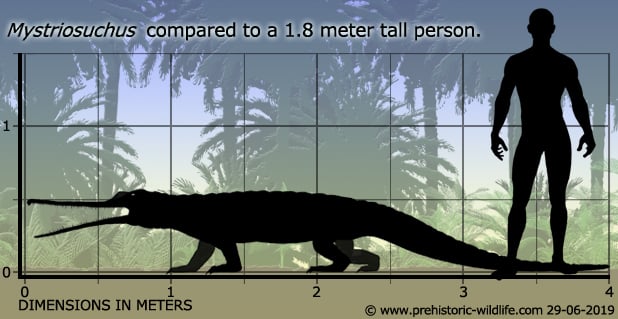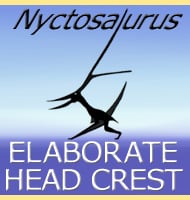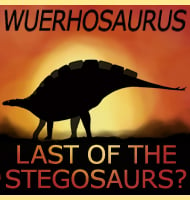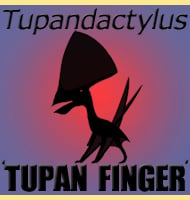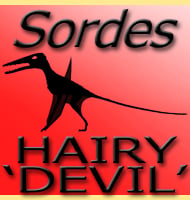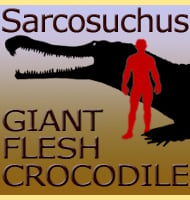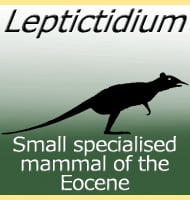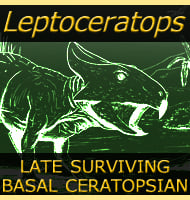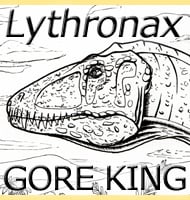In Depth
Just like the later crocodiles, the phytosaurs evolved a variety of different head shapes that saw some of them becoming specialised hunters. In this respect Mystriosuchus developed a very thin snout that saw it take on a resemblance to a modern day gavial, but did so long before the crocodiles. This is a case of convergent evolution where a specialised body feature occurs again to deal with similar lifestyle.
Mystriosuchus with their slender jaws would have experienced dramatically less resistance as they were opened and closed in the water than their broader snouted relatives. This greatly increased the opening and closing speed of the jaws, making it much easier for Mystriosuchus to catch prey like fish between them. However these very gracile jaws would not have been very strong, meaning that Mystriosuchus was probably restricted to hunting small prey like fish as attacking larger terrestrial animals would have carried a much higher risk of serious injury to the jaws. To put this in perspective, if one of the jaws ever became broken, the Mystriosuchus in question would not be able to feed, and would end up starving to death.
The habitat of Mystriosuchus was long thought to have been the river systems of Triassic Europe where it could have lounged upon the river banks warming itself in the sun before entering the water to either cool off or hunt for fish. An Italian specimen however seems to have come from a marine (saltwater) environment, something that suggests that Mystriosuchus would have been active on a river upstream, all the way down to the estuary where the river met the sea, and possibly even along some stretches of coastline. Again this shows phytosaurs living like the later crocodiles, in this case perhaps best represented by the crocodile Teleosaurus from the Mid Jurassic that not only had very similar hunting adaptations to Mystriosuchus, but also a estuarine/coastal distribution.
Although today known as Mystriosuchus, the fossils that make up the holotype of the genus were originally attributed to another phytosaur named Belodon by Christian Erich Hermann von Meyer in 1863. Named as Belodon planirostris, these represented a separate species from the Belodon type species (B. plieningeri) until Fraas erected them as their own genus in 1896. Standard procedure for doing this saw the original species name being used to establish the type species of the new genus which is how fossils once attributed to Belodon planirostris became Mystriosuchus planirostris. Additionally slim snouted phytosaurs were once thought to be the females to the deep snouted forms on the grounds that taller snouts were interpreted as being display devices for males to attract the females. Today however this notion is no longer considered valid as the deep and slim snouted phytosaurs are seen to interpret different genera adapted to different predatory lifestyles.
Further Reading
– Two new phytosaur species (Archosauria, Crurotarsi) from the Upper Triassic of southwest Germany. – Neues Jahrbuch f�r Geologie und Pal�ontologie, Monatshefte 2000(8):467-484. – A. Hungerb�hler & A. P. Hunt – 2000. -The Late Triassic phylosaur Mystriosuchus westphali, with a revision of the genus. – Palaeontology 45(2): 377-418. – A. Hungerb�hler – 2002. – Complete specimen of Mystriosuchus (Reptilia, Phytosauria) from the Norian (Late Triassic) of Lombardy (Northern Italy). – Rivista Italiana di Paleontologia e Stratigrafia. 109 (3): 475–498. – E. Gozzi & S. A. Renesto – 2003.
